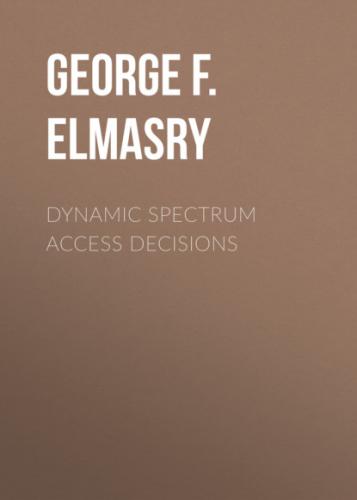Table of Contents
1 Cover
4 Preface
7 Part I DSA Basic Design Concept Chapter 1: Introduction 1.1 Summary of DSA Decision‐making Processes 1.2 The Hierarchy of DSA Decision Making 1.3 The Impact of DSA Control Traffic 1.4 The Involvedness of DSA Decision Making 1.5 The Pitfalls of DSA Decision Making 1.6 Concluding Remarks Exercises Bibliography Chapter 2: Spectrum Sensing Techniques 2.1 Multidimensional Spectrum Sensing and Sharing 2.2 Time, Frequency, and Power Spectrum Sensing 2.3 Energy Detection Sensing 2.4 Signal Characteristics Spectrum Sensing 2.5 Euclidean Space Based Detection 2.6 Other Sensing Techniques 2.7 Concluding Remarks Exercises Appendix 2A: The Difference Between Signal Power and Signal Energy Bibliography Chapter 3: Receiver Operating Characteristics and Decision Fusion 3.1 Basic ROC Model Adaptation for DSA 3.2 Adapting the ROC Model for Same‐channel in‐band Sensing 3.3 Decision Fusion 3.4 Concluding Remarks Appendix 3A: Basic Principles of the ROC Model The ROC Curve as Connecting Points 3A.2 The ROC Curve Classifications Bibliography Chapter 4: Designing a Hybrid DSA System 4.1 Reasons for Using Hybrid DSA Design Approaches 4.2 Decision Fusion Cases 4.3 The Role of Other Cognitive Processes 4.4 How Far can Distributed Cooperative DSA Design go? 4.5 Using a Centralized DSA Arbitrator 4.6 Concluding Remarks Exercises Bibliography
8
Part II Case Studies
Chapter 5: DSA as a Set of Cloud Services
5.1 DSA Services in the Hierarchy of Heterogeneous Networks
5.2 The Generic DSA Cognitive Engine Skeleton
5.3 DSA Cloud Services Metrics
5.4 Concluding Remarks
Bibliography
Chapter 6: Dynamic Spectrum Management for Cellular 5G Systems
6.1 Basic Concepts of 5G
6.2 Spatial Modeling and the Impact of 5G Dense Cell Deployment
6.3 Stages of 5G SI Cancellation
6.4 5G and Cooperative Spectrum Sensing
6.5 Power Control, Orthogonality, and 5G Spectrum Utilization
6.6 The Role of the Cell and End‐User Devices in 5G DSM
6.7 Concluding Remarks
Bibliography
Chapter 7: DSA and 5G Adaptation to Military Communications
7.1 Multilayer Security Enhancements of 5G
7.2 MIMO Design Considerations
7.3 Multifaceted Optimization of MU MIMO Channels in Military Applications
7.4 Other Security Approaches
7.5 Concluding Remarks
Bibliography
Chapter 8: DSA and Co‐site Interference Mitigation
8.1 Power Spectral Density Lobes
8.2 Co‐site
